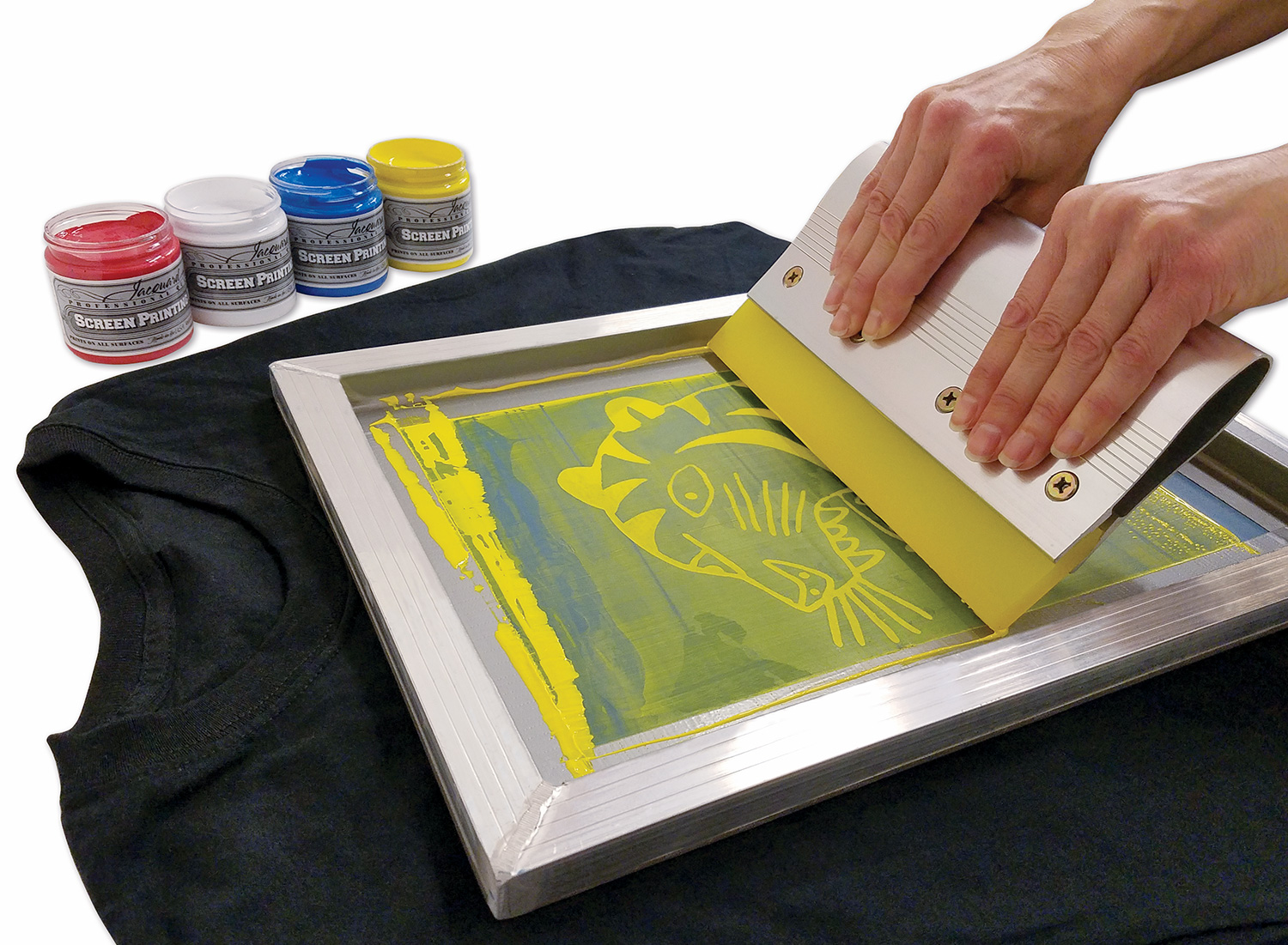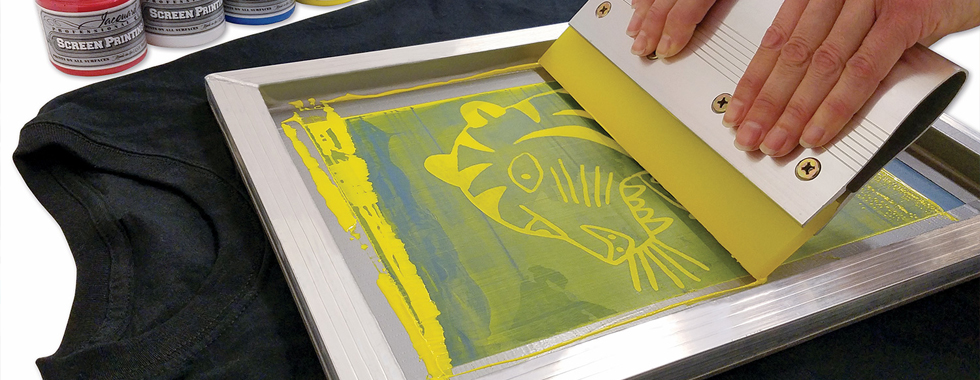ChatGPT said: Deep dive at 10:9 Design LLC Company screen printing process
Wiki Article
The Essential Guide to Recognizing Screen Printing and Its Versatile Utilizes
Screen printing has an abundant background that dates back to ancient times, advancing right into an advanced strategy used throughout numerous industries today. This guide checks out the intricacies of the screen printing process, outlining its applications in home, advertising and marketing, and fashion style - 10:9 Design Screen Printing. Comprehending these fundamentals can open up imaginative potential for both creative and industrial jobs. The complying with sections will certainly reveal essential ideas and techniques to boost one's screen printing undertakingsThe History of Screen Printing
Screen printing has roots that map back centuries, its development reflects the technological and creative improvements of various cultures. Originating in ancient China, the method was originally made use of for enhancing fabrics and later spread to Japan, where it became indispensable to Ukiyo-e woodblock printing. The technique changed to Europe in the 18th century, where it got popularity amongst craftsmens and commercial printers. The invention of picture solution in the 20th century transformed screen printing, permitting even more detailed designs and better efficiency. Musicians like Andy Warhol better propelled its popularity, using the medium to develop renowned jobs that mixed commercialism and great art. By the late 20th century, screen printing had actually developed itself as a versatile technique, employed in style, advertising and marketing, and art. Today, it continues to advance, integrating electronic modern technology and increasing its applications across different markets.The Screen Printing Refine Explained
Screen printing changes creative visions right into concrete designs with a series of exact actions. Originally, an image is created and afterwards transferred onto a screen, commonly made from great mesh textile extended over a structure. A light-sensitive emulsion is put on the screen, which is revealed to light, hardening in locations not covered by the picture. After cleaning out the unhardened emulsion, a stencil is created.Next off, the screen is put over the substrate, whether it be fabric, paper, or an additional product. Ink is after that pressed with the open locations of the pattern using a squeegee, transferring the style onto the substratum below. This procedure can be duplicated for numerous shades, requiring different displays for each color. The printed thing is treated utilizing warm to guarantee the ink adheres effectively, resulting in a durable, dynamic layout prepared for usage.
Kinds of Screen Printing Techniques

In addition, specialized techniques, such as discharge screen printing, eliminate dye from the material to create softer prints, while aluminum foil screen printing uses metal foil to achieve a glossy coating (10:9 Design Texas). Each technique offers distinct features, accommodating different imaginative demands and manufacturing scales, inevitably broadening the opportunities within the screen printing domain name
Applications of Screen Printing in Different Industries

Additionally, the signs and advertising markets utilize screen printing for producing captivating screens and banners. This approach enables vibrant colors and detailed layouts that capture interest. In electronic devices, screen printing is employed for using conductive inks to circuit boards, important for component links. The home style market welcomes screen printing to produce distinctive designs on fabrics and wall art. In here general, screen printing serves as a vital device throughout diverse areas, improving products with customized and aesthetically attractive graphics.
Tips for Effective Screen Printing Projects
While embarking on a screen printing task, mindful attention to detail can considerably improve the last end result. Picking top notch materials is essential; this consists of the screen, inks, and substratums. Using ideal mesh counts can affect ink deposition and information resolution. Prep work is just as crucial; complete cleaning of displays and correct exposure times ensure crisp prints.Next, exact registration is essential for multi-color prints. Using alignment devices can assist attain specific layering. In addition, testing prints on scrap products prior to manufacturing aids determine potential concerns without losing resources.

Regularly Asked Inquiries
What Products Are Ideal for Screen Printing on Fabric?
Cotton and polyester blends are optimal for screen printing on material as a result of their sturdiness and ink absorption. In addition, specialized materials like silk or canvas can produce unique textures and finishes, boosting the general style top quality.Just how Do I Tidy and Maintain Screen Printing Devices?
To clean and preserve screen printing equipment, one ought to on a regular basis clean displays with ideal solvents, evaluate mops for wear, oil relocating parts, and shop all things in a dry, dust-free environment to lengthen their life expectancy.What Are the Environmental Influences of Screen Printing?
Screen printing can have significant ecological influences, including chemical waste from inks and solvents, water usage during cleansing processes, and power consumption. Eco-friendly materials and lasting techniques are important for minimizing these unfavorable results.Can Screen Printing Be Done in the house Properly?
Screen printing can be successfully done at home with the appropriate materials and techniques. Hobbyists can create high quality prints, though success depends on their skill level, devices, and understanding of the procedure involved.
What Are the Expenses Linked With Starting a Screen Printing Business?

Beginning a screen printing company includes costs for devices, products, and work space. First expenditures usually vary from a few hundred to a number of thousand bucks, depending on the range, high quality of equipment, and desired manufacturing capacity.
Screen printing has an abundant background that dates back to ancient times, developing into a sophisticated method used across various markets today. An additional technique, rotary screen printing, utilizes cylindrical displays, facilitating continuous printing on material rolls, therefore boosting effectiveness for large manufacturings. Furthermore, specialized methods, such as discharge screen printing, get rid of color from the material to develop softer prints, while aluminum foil screen printing uses metallic foil to achieve a shiny coating. In the fashion sector, screen printing is widely made use of to develop dynamic styles on clothing, enabling brand names to display their distinct styles. Cotton and polyester blends are excellent for screen printing on material due to their sturdiness and ink absorption.
Report this wiki page